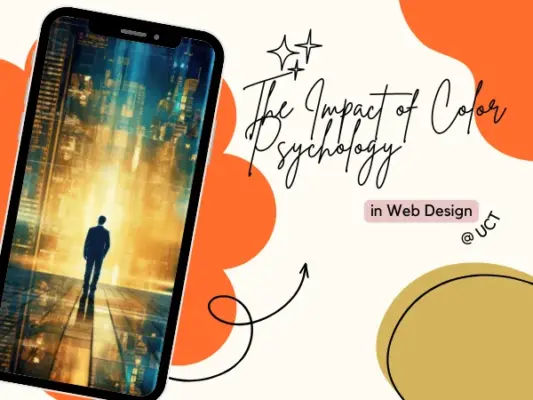
Color is one of the most powerful tools in a web designer’s arsenal. It goes beyond mere aesthetics; it taps into human psychology, influencing emotions, perceptions, and even behaviors. Understanding the impact of color psychology in web design is essential for creating websites that not only look good but also engage users and drive conversions. In this blog, we’ll explore how different colors affect user behavior, how to choose the right color schemes for your website, and tips for effectively incorporating color psychology into your design process.
Why Color Psychology Matters in Web Design
Color psychology refers to the study of how colors affect human emotions and behavior. In the context of web design, the colors you choose can significantly impact how users perceive your brand and how they interact with your site. For example, studies have shown that certain colors can evoke specific emotions—red for urgency, blue for trust, and green for calmness. By strategically using color psychology, you can guide user actions, highlight important elements, and create a memorable user experience.
The Emotional Impact of Different Colors
1. Red: Red is a powerful color that grabs attention and evokes strong emotions like excitement, passion, and urgency. It’s often used in call-to-action buttons to encourage immediate responses.
2. Blue: Blue is associated with trust, reliability, and calmness. It’s a popular choice for financial institutions and healthcare websites where trust is a key factor.
3. Green: Green represents growth, nature, and tranquility. It’s often used by brands focused on sustainability or wellness.
4. Yellow: Yellow is a cheerful color that can evoke feelings of happiness and positivity. It’s great for creating a warm, welcoming atmosphere, but should be used sparingly to avoid overwhelming users.
5. Black: Black conveys luxury, sophistication, and elegance. It’s often used in high-end brands’ websites to create a sense of exclusivity.
6. Purple: Purple is associated with creativity, wisdom, and luxury. It can add a sense of sophistication and mystery to your site.
How to Choose the Right Color Scheme for Your Website
Choosing the right color scheme involves more than just picking your favorite colors. Here are a few tips to help you select the perfect palette:
1. Understand Your Brand Identity: Your brand’s personality should dictate your color choices. For instance, a playful brand might use bright, bold colors, while a more serious, professional brand might opt for muted tones.
2. Consider Your Target Audience: Different demographics respond to colors in different ways. For example, younger audiences might be drawn to vibrant colors, while older users might prefer more subdued shades.
3. Use the 60-30-10 Rule: This classic design rule helps create a balanced color scheme. Use your main color for 60% of the design, a secondary color for 30%, and an accent color for 10%.
4. Test and Iterate: A/B testing different color schemes can provide valuable insights into how your audience reacts to various colors, helping you optimize your design for better engagement.
Tips for Incorporating Color Psychology in Web Design
1. Highlight Important Elements: Use contrasting colors to draw attention to key elements like call-to-action buttons, sign-up forms, and product highlights.
2. Create a Visual Hierarchy: Use color to guide users through your content. For instance, brighter colors can be used for headings, while softer tones can be used for body text.
3. Stay Consistent: Consistency is key in branding. Ensure that the colors you use on your website align with your overall brand identity across all platforms.
4. Be Mindful of Accessibility: Ensure your color choices are accessible to all users, including those with color vision deficiencies. Use tools like contrast checkers to make sure your text is legible against your chosen background colors.
Conclusion
Color psychology plays a crucial role in web design, influencing how users perceive your brand and interact with your website. By understanding the emotional impact of different colors and carefully selecting your color scheme, you can create a website that not only looks appealing but also drives user engagement and conversions. Remember, the key is to use color strategically, keeping your brand identity, target audience, and overall user experience in mind.